by Janine Wilkin
On the Rocks
January 7, 2022
An ode to the Appalachian Trail in Pennsylvania
If there’s one thing I am most afraid of when I am hiking, it’s snakes.
My nightmare goes something like this: I step on a snake and am correspondingly bitten by said snake. Because it all happens so quickly, I can’t identify if it was venomous or not, so I need to treat it as if it was. Because of this fear, I’ve researched snake first aid and know that the prevailing wisdom is that snake-bite kits aren’t really helpful. Instead, I should remove constrictive clothing and shoes, keep the bite below my heart and get to a hospital.
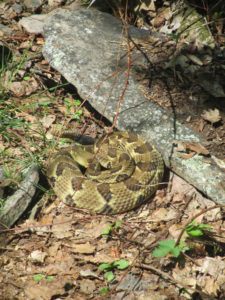
No thank you. Photo by David Warners.
But my nightmare continues: Basic first aid, check. But say I am ten miles away from the nearest trailhead, or five, or one — do I try to hike it out? Or wait for help to arrive? I don’t know! This reminds me that I really need to take a wilderness first aid class, but it always seems to fall into my graveyard of good intentions.
Hiking the Appalachian Trail (A.T.) in Pennsylvania has helped me to overcome this greatest fear, by introducing a new one: face planting on rocks.
As a LASHer (Long-Ass Section Hiker) with 250 miles of Trail in my rearview mirror, rocks, of course, are nothing new. But Pennsylvania rocks carry with them a reputation, and not a good one. Pennsylvania rocks are like James Dean of rocks: handsome, rugged and troubled rebels.
Don’t mess with them, if you catch my drift.
As if the feeling of my most delicate epidermis slamming into unyielding forest concrete isn’t enough, the fact that rock habitat is extremely hospitable to (insert expletive) snakes, makes this terrain a sort of double jeopardy for me.
All that said, there is incredible beauty and richness to the rockier sections of Pennsylvania that are often overshadowed by the Trail’s cantankerous and fear-inducing rap. Rocks are good teachers of time and patience, both in terms of geology and hiking. Correspondingly, I watch where my feet are going and take these rockier sections like a surgeon handles a scalpel, slowly and with precision. As a result, I’m rewarded for the first time by really noticing the magic of what lies beneath versus what lies ahead.
Let’s start with the boulder fields that I discovered on a two-day backpacking trek from Wind Gap to the New Jersey border. When I say “boulders,” I am talking roughly soccer-ball-sized rocks congregating in the hundreds (if not more). Thin veils of lichen cover their surfaces, and it feels like rough sandpaper wherever the bedrock is exposed.
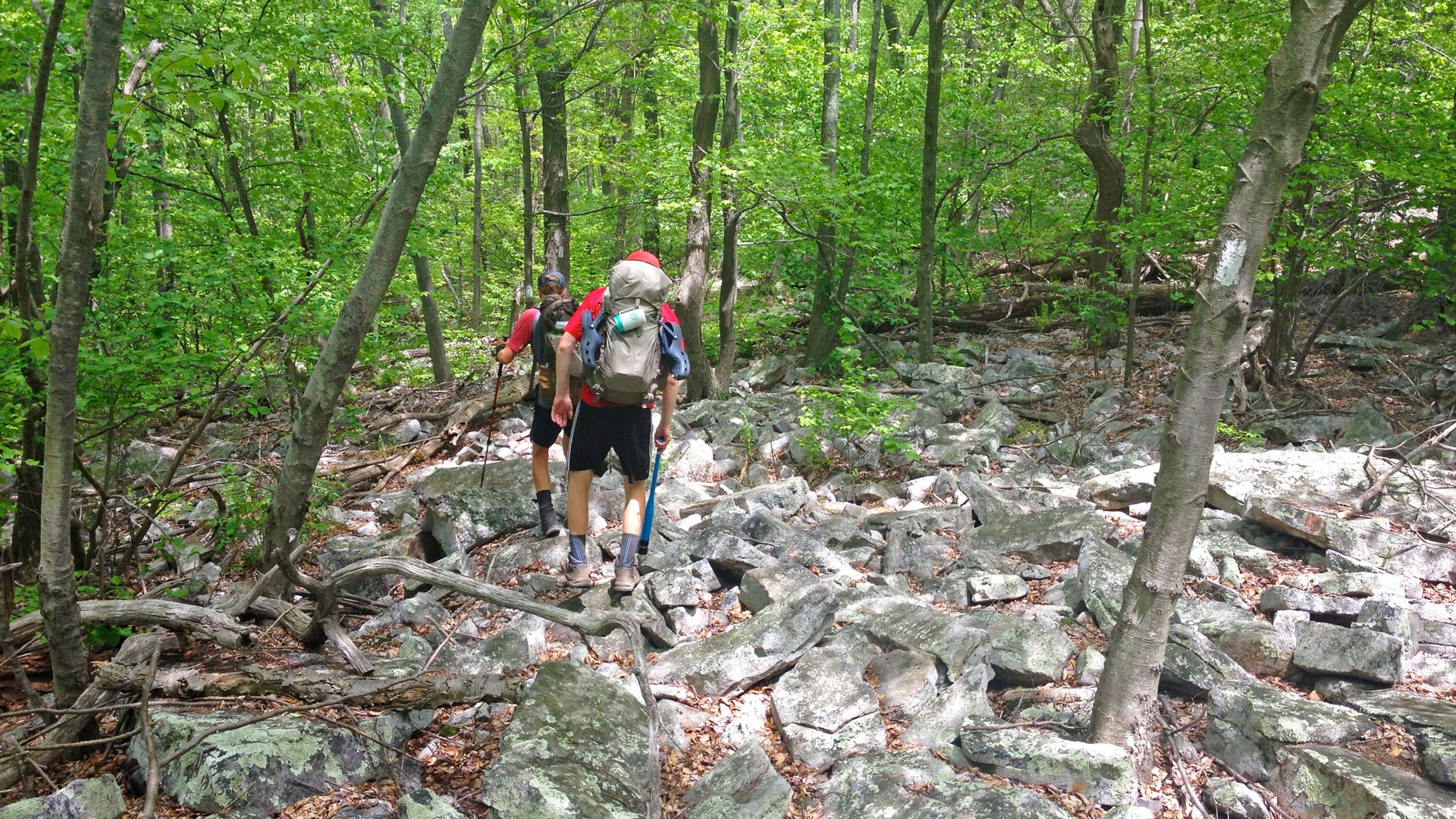
One of the many boulder-strewn stretches of the A.T. in Pennsylvania. Note the beautiful lichen!
Photo by Jordan Bowman.
Beyond these features, what you are actually seeing when you look down at these boulders is the power of water. We often think about the power of water when we think about floods or hurricanes, but it’s mind-blowing to think that water not only can shape rock but also break it. The history of those boulder fields began 75,000 years ago when the Laurentide Continental Glacier covered the area. If you fast forward 55,000 years when the glacier started its retreat, rainwater and melted ice began seeping into porous bedrock. As that water froze, it caused the rock to crack, a process called mechanical weathering. The result you see today resembles the playroom of a toddler who just dumped her blocks in a pile and walked away — in this case, a boulder field.
The lichen itself is magical in a different way. It is plentiful in this section and that’s a good thing. Known to be very fragile and almost as delicate as tissue paper, lichen’s mere existence is an excellent indicator of air pollution — or more importantly, lack of it. So, if you are hiking in an area abundant with lichen, it’s time to channel your inner Deepak Chopra, focus on your breath and reward your lungs with a tall drink of premium air quality.
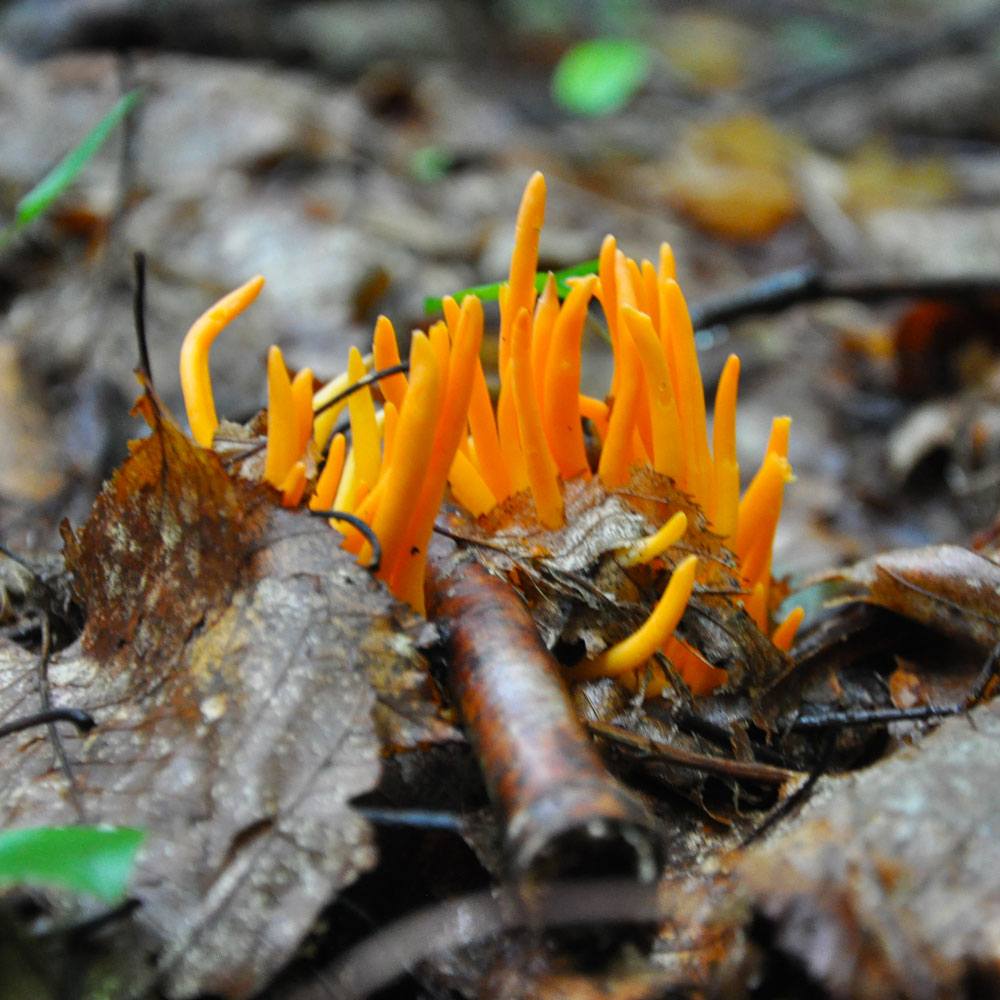
Some of the Trail’s most striking beauty can be easily missed if you hike too quickly.
Photo by Laurie Potteiger.
Last, the fungi on the Trail are completely enchanting. Fungi is a kissing cousin to lichen, with lichen distinguishing itself by its added ingredient of algae. To be honest, I find that I’m so drawn to them that I question why I didn’t pursue a career in mycology. If you scroll through my backpacking photos, you’ll see the usual — classic poses on overlooks, fall foliage, A.T. signage. What you’ll also see is a disproportionately huge number of fungi pictures. They are beautiful, and they thrive thanks to the features of the Pennsylvania landscape.
The next time you hear the nickname “Rocksylvania,” think not of a boot-eating, ankle-twisting, patience-challenging slog, but rather a stiff cocktail best enjoyed by sipping it. Life rarely offers us chances to explore and notice at an unhurried pace, so appreciate the challenge and the deliberate pace of Pennsylvania and immerse yourself in the abundant details of the forest floor. With this perspective, you are bound to find Pennsylvania not excruciating, but completely enchanting. As for this Pennsylvania native, I’ll set aside my fears and take mine straight up on the rocks anytime.
Discover More

Official Blog
The Whiskey Hollow Six
A two-day backpacking trip on the Appalachian Trail helped a group of six women find comfort in nature’s embrace and reexamine the artificial boundaries we often create for ourselves.
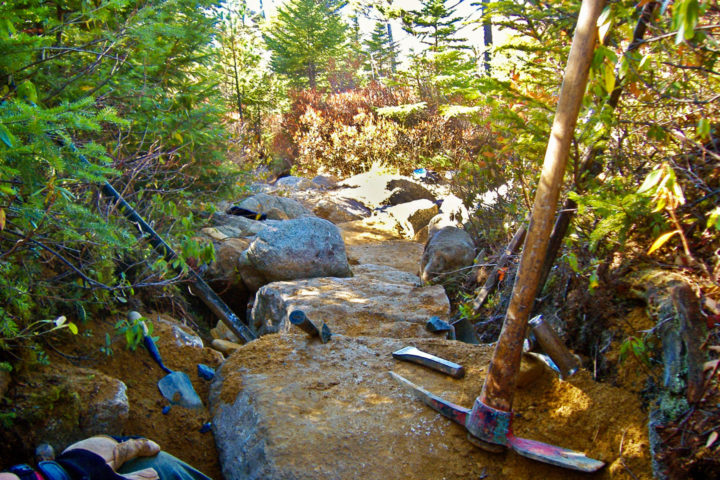
Official Blog
Ritual of the Trail
Writer Michael Garrigan provides a glimpse into his most important ritual: stewarding the Trail so that future generations can “sink into its soil.”
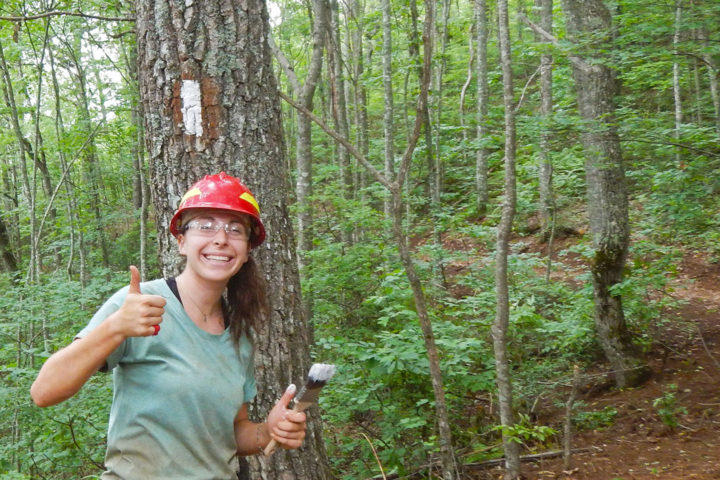
Official Blog
The Next Generation of Volunteers
The ATC is committed to welcoming, training, and supporting the next generation of Trail volunteers through a variety of programs and opportunities.
